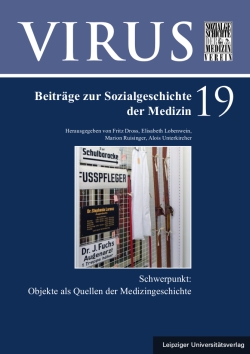
VIRUS Band 19, pp. 025-050, 2021/06/10
Schwerpunkt: Objekte als Quellen der Medizingeschichte

The article questions the hypothesis about the specialization of healing sanctuaries on thehealing of specific diseases by interpreting the frequency of so-called anatomical votives.Those votives represent parts of the human body and are known to be dedicated in relation tothe wish for the healing of a particular body part. But the interpretation of those objects holdssome challenges which the article addresses. There are not just multiple reasons for dedicatinga specific anatomical votive but also the way of how they are preserved – as an object itself oras a name in an inscription – must be considered. Furthermore, their quantity cannot be usedfor a representative statistical analysis. Also, their validity for medical and historical questionsis limited. Finally, a catalogue of criteria for interpreting the individual context of the objectswill be presented to sensitize to an objective interpretation.
Keywords: Ancient Greece, Attica, Specialisation of Healing Sanctuaries, Asclepius, Amphiaraos, Epigraphy, Inscriptions, Archaeological Objects, Anatomical Votives, Statistics, Quantitative Analysis